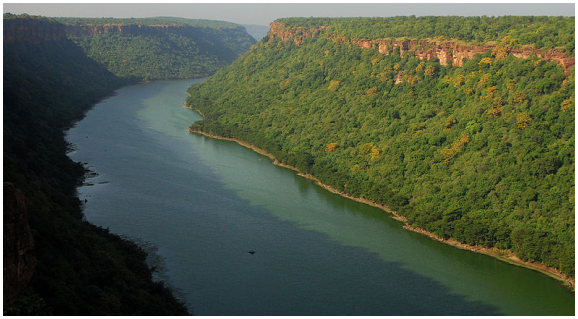HISTORY OF CHAMBAL
History of chambal
About Chambal Safar
The Chambal ravines’ labyrinthine maze of deep gullies formed by accelerated erosion, were a natural ally to those seeking to hide or shelter in their folds. The fall of Delhi and Kannauj in the twelfth century, gave a fillip to the legends, as successive waves of Rajput refugees sought asylum in the Chambal Behad. The divine origin of Indian Rivers is an article of faith for many millions of believers. Celebrated, and worshipped, the River is revered as a physical manifestation of the munificence of the omnipotent Lord. Interestingly, the River Chambal, one of the major rivers feeding into the Yamuna, and thence Ganga, is completely devoid of any such antecedents. The earliest mentions of Chambal are found in the epic Mahabharata; King Rantideva of Dasapura (Mandasaur in MP), son of Sankrti is praised for having achieved unrivaled fame by distributing beef along with food grains to Brahmans. “A great river oozed from the heaps of those animal hides and it became known everywhere as the ‘River of Hides’ – Carmanvati (carman-skin, hide) (1).

The Chambal ravines, with their intricate maze of deep gullies, are a testament to nature's power and beauty. Formed by accelerated erosion over centuries, these ravines create a landscape both rugged and mesmerizing. The twisting, turning pathways of the gullies invite explorers to discover their secrets, revealing a unique geological marvel that stands as a natural wonder in its own right.
The labyrinthine gullies of the Chambal ravines have long been a natural ally to those seeking refuge. Their depth and complexity provide an ideal shelter, making them a perfect hideout for wildlife and historical figures alike. Throughout history, many have found solace and protection within these natural fortresses, adding an air of mystery and intrigue to the region. The ravines serve as a sanctuary for various species, fostering biodiversity and supporting a delicate ecosystem.
Wandering through the Chambal ravines feels like stepping into a different world. The combination of natural beauty and historical significance makes these gullies a must-see for anyone seeking adventure and tranquility in equal measure. The ravines whisper stories of the past, where legends and reality intertwine. Each turn within the labyrinth reveals new vistas and hidden corners, captivating the imagination and inspiring a deep sense of wonder. The Chambal ravines are not just a geographical feature; they are a living, breathing entity that invites exploration and reverence.
The Baghis’ survival depended on the sympathy and complicit support of the local population. The emergence of organized gangs, caste based vendettas and kidnapping for ransom led to an erosion of this support base. The Baghi lost the high moral ground and became more of a common thug, losing his place of honour in local folklore. The late twentieth century saw several rehabilitation programmes combined with relentless law enforcement. Appeals to surrender by the social activist Vinobha Bhave and by Jayprakash Narayan yielded results and the 1970’s saw mass surrenders by former dacoits. Straggling groups continued to rear their head over the next couple of decades but were ruthlessly stamped out, and were rarely more than petty criminals trying to don the mantle of the rebels of yore. The Chambal Ravines are largely peaceful today. Their romantic allure remains, but more as a part of the historical narrative of this land than as a way of life.
